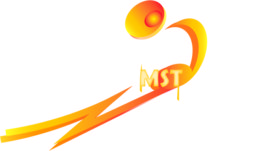
Photo by Brett Jordan on Unsplash
The earlier post on mindfulness remains one of the most visited to date (5th out of 41 in terms of number of visits). If you have not had the opportunity to read that one, you can find it HERE. In that post, I mentioned I was starting a meditation practice. Later, I followed up with a couple of posts related to my use of the MUSE system. My use of MUSE has had some staying power with more than 250 sessions having been logged! Pretty amazing for someone who wasn’t much of a believer in meditation! Given the overall general interest in mindfulness, I figured it was time to pursue the topic in more depth. This is the first of two posts I have planned looking at two books on the topic.
The first one, written by the Jon Kabat-Zinn, developer of Mindfulness Based Stress Reduction (MBSR) – used in many medical facilities around the world, is entitled “Mindfulness for Beginners – reclaiming the present moment – and your life”.

The second one, written by Keith A, Kaufman, Carol R. Glass, and Timothy R. Pineau, is entitled “Mindful Sport Performance Enhancement – Mental Training for Athletes and Coaches”. In this book, a six- session program of MSPE (mindful sport performance enhancement) is laid out in detail. This book will be covered in detail in a subsequent post.

Returning to “Mindfulness for Beginners”, the book’s 82 chapters are organized into 5 parts:
- Entering
- Sustaining
- Deepening
- Ripening
- Practicing
The book is 162 pages long allowing just a page or two for each chapter – perfect for leaving the book on the desk or nightstand and reading a quick chapter or two when the opportunity arises. In the introduction, the author defines mindfulness as:
“… Awareness, cultivated by paying attention in a sustained and particular way: on purpose, in the present moment, and non-judgmentally”
Maybe just as important, he also describes later in the book what mindfulness is not! For example, he makes it clear that mindfulness does not mean trying to shut down that chatter going on in our heads. Instead, it involves an acknowledgement of those random thoughts into awareness followed by a gentle return to what we really want to focus on at the present moment. Included with the text is a link to an audio program. In fact, the book started out as an audio program. He summarizes the major topics covered in both the text and the audio program as follows:
- An introduction into mindfulness as though the reader had never heard of it before
- Why mindfulness is worth integrating into your life
- The various health benefits of mindfulness
- New areas of scientific research into the application of mindfulness
- What all of this means as to how we relate to our thoughts and emotions
While he does not specifically explore the implementation of mindfulness in sport, it is easy to grasp how training the mind to be able to improve its ability to focus on an object or idea can be beneficial in sport (and life). He shows clearly that we can’t always control the things around us, but how we choose to relate to what is going on around us makes all the difference.
He also explains that a mindfulness program should not be outcome based. This should be a very familiar concept to us amateur athletes who have been told over and over to focus on the process and not the outcome. It is the same for implementing a meditation practice. The objective should be to improve awareness over worrying about the result.
I really wish I had read this book before I started my mindfulness meditation practice. It provides such a broad introduction of the concepts and helps to lay the foundation to really beginning to understand to concept of mindfulness. I say “beginning to understand” as the author explains how it is really a life long journey in which it is really important to maintain the “beginner’s mind” approach throughout the process.
If you have interest in mindfulness, this book is a great launching pad. I highly recommend it. Here is the amazon link for those that are interested in learning more:
